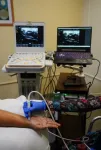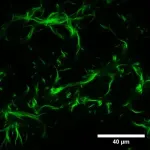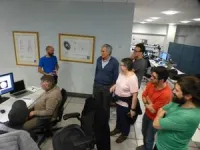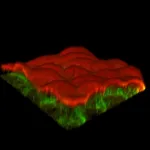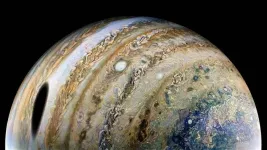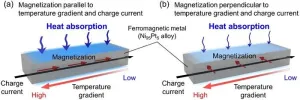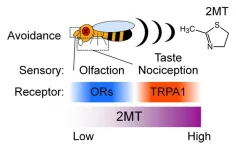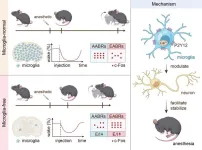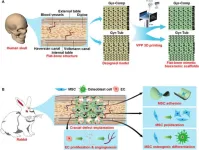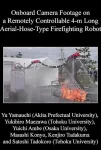(Press-News.org) Researchers at the Indian Institute of Science (IISc), in collaboration with Aster-CMI Hospital, have developed an AI tool that can identify the median nerve in ultrasound videos and detect carpal tunnel syndrome (CTS). The study was published in IEEE Transactions on Ultrasonics, Ferroelectrics, and Frequency Control.
CTS arises when the median nerve, which runs from the forearm into the hand, is compressed at the carpal tunnel part of the wrist, resulting in numbness, tingling or pain. It is one of the most common nerve-related disorders, specifically affecting individuals who perform repetitive hand movements, such as office staff who work with keyboards, assembly line workers, and sportspersons.
Doctors currently use ultrasound to visualise the median nerve, and assess its size, shape, and any potential abnormalities. “But unlike X-rays and MRI scans, it’s hard to detect what’s going on in ultrasound images and videos,” explains Karan R Gujarati, first author and former MTech student at the Department of Computational and Data Sciences (CDS), IISc. “At the wrist, the nerve is quite visible, its boundaries are clear, but if you go down to the elbow region, there are many other structures, and the boundaries of the nerve are not clear.” Tracking the median nerve is also important for treatments that require doctors to administer local anaesthesia to the forearm or block the median nerve to provide pain relief.
To develop their tool, the team turned to a machine learning model based on transformer architecture, similar to the one powering ChatGPT. The model was originally developed to detect dozens of objects simultaneously in YouTube videos. The team stripped the model’s computationally expensive elements to speed it up, and cut down the number of objects it could track to just one – the median nerve, in this case. They collaborated with Lokesh Bathala, Lead Consultant Neurologist at Aster-CMI Hospital, to collect and annotate ultrasound videos from both healthy participants and people with CTS, to train the model. Once trained, the model was able to segment the median nerve in individual frames of the ultrasound video.
“Imagine a video of an autonomous car. If the car is moving on the road, you want to track the car,” explains corresponding author Phaneendra K Yalavarthy, Professor at CDS. “In the same way, we are able to track the nerve throughout the video.”
The model was also able to automatically measure the cross-sectional area of the nerve, which is used to diagnose CTS. This measurement is performed manually by a sonographer. “The tool automates this process. It measures the cross-sectional area in real time,” explains Bathala. It was able to report the cross-sectional area of the median nerve with more than 95% accuracy at the wrist region, the researchers say.
Although many machine learning models have been developed to screen CT and MRI scans, very few have been developed for ultrasound videos, especially nerve ultrasound, explains Yalavarthy.
“Initially, we trained the model on one nerve. Now we are going to extend it to all nerves in the upper and lower limbs,” says Bathala. He adds that it has already been deployed as a pilot test in the hospital. “We have an ultrasound machine connected to an additional monitor where the model is running. I can look at the nerve, and at the same time, the software tool is also delineating the nerve. We can see its performance in real time.”
Bathala says that the next step would be to look for ultrasound machine manufacturers who can integrate this into their systems. “This kind of tool can assist any doctor. It can reduce the inference time,” he says. “But of course, the final diagnosis will need to be done by the physician.”
END
AI tool aids in screening for nerve disorder
2023-12-22
ELSE PRESS RELEASES FROM THIS DATE:
Big impacts from small changes in cell
2023-12-22
Tiny things matter – for instance, one amino acid can completely alter the architecture of the cell. Researchers at the Universities of Göttingen and Warwick investigated the structure and mechanics of the main component of the cytoskeleton of the cell: a protein known as actin. Actin is found in all living cells where it has a range of important functions – from muscle contraction to cell signalling and cell shape. This protein comes in two different varieties termed “isoforms”, which are known as gamma actin and beta actin. The difference between the two proteins is ...
Jupiter was targeted by exoplanet hunter
2023-12-22
For the first time, an instrument to find planets light years away was used on an object in the Solar System, in a study on Jupiter's winds.
We find ourselves at a time when it has become almost commonplace to discover planets orbiting another star, with more than 5,000 already registered. The first distant worlds to incorporate this list were mainly giant planets, similar to but also very different in many ways from Jupiter and Saturn.
Astrophysicists have already begun to obtain data on the atmospheres of exoplanets, but fundamental ...
Pandemic lessons: Insights into how mobility restrictions affect healthcare costs
2023-12-22
Osaka, Japan - As the world grappled with lockdowns and restrictions brought by the COVID-19 pandemic, researchers at Osaka Metropolitan University conducted an extensive study to elucidate the link between changes in human mobility and the impact on medical costs associated with lifestyle-related diseases.
Dr. Haruka Kato and Professor Atsushi Takizawa of the Graduate School of Human Life and Ecology at Osaka Metropolitan University were concerned by the negative health effects resulting from the restriction of ...
Controlling thermoelectric conversion in magnetic materials by magnetization direction
2023-12-22
1. NIMS has succeeded in directly observing the "anisotropic magneto-Thomson effect," a phenomenon in which the heat absorption/release proportional to an applied temperature difference and charge current (i.e., Thomson effect) changes anisotropically depending on the magnetization direction in magnetic materials. This research is expected to lead to further development of basic physics and materials science related to the fusion area of thermoelectrics and spintronics, as well as to development of new functionalities to control thermal energy with magnetism.
2. The Thomson effect has long been known as one of the fundamental ...
Stinky, bitter, and painful: A novel insect repellent attacks multiple sensory pathways
2023-12-22
Okazaki, Japan – crop damage in agriculture and the transmission of vector-borne diseases by insect pests have become worldwide threat nowadays. Chemical treatments such as insecticides and repellents have been a major strategy against insect pests for centuries. Due to limited understanding of mechanisms of insect avoidance behavior, however, development of insect repellents has been delayed. To discover compounds that effectively repel insect pests, it is important to focus on key molecules associated with sensory, particularly aversive, responses. In this study, researchers ...
Microglia act as a “facilitator and stabilizer” for anesthesia
2023-12-22
Though it may be a surprise to the millions of people who undergo general anesthesia every year for medical procedures, the biological mechanism for how different anesthetics block consciousness is still not fully understood. However, researchers may be one step closer after uncovering the way small immune cells in the brain called microglia are impacted by general anesthesia.
The research was presented in a paper published in eLife on 22/Dec/2023.
“We found that microglia play an important role in regulating the body’s response to general anesthesia. ...
3D-printed flat-bone-mimetic bioceramic scaffolds for cranial restoration
2023-12-22
The cranial bone in the human body performs very important functions, such as protecting the brain and enabling the passage of the cranial nerves that are essential to physiological functioning. Critical-sized cranial defects can disrupt both the physical and psychological well-being of patients. Restoration of critical-sized cranial defects by cranioplasty is challenging for reconstructive surgeons, who prefer to use autologous bone grafts. The acquisition of autologous bone requires additional surgeries concomitant with risks such as free flap loss, infection, deep venous thrombosis, and nerve injury. These limitations necessitate the development ...
TTUHSC's Reddy elected fellow by the National Academy of Inventors
2023-12-22
P. Hemachandra Reddy, Ph.D., a professor in the Texas Tech University Health Sciences Center (TTUHSC) School of Medicine’s Department of Internal Medicine who has researched healthy aging, dementia and other neurodegenerative diseases for more than 20 years, recently was named to the 2023 class of Fellows for the National Academy of Inventors (NAI).
The NAI is a member organization comprised of U.S. and international universities and governmental and nonprofit research institutes with more than 4,600 individual inventor members and fellows spanning more than 300 institutions worldwide. ...
Light colour is less important for the internal clock than originally thought
2023-12-22
Vision is a complex process. The visual perception of the environment is created by a combination of different wavelengths of light, which are decoded as colours and brightness in the brain. Photoreceptors in the retina first convert the light into electrical impulses: with sufficient light, the cones enable sharp, detailed, and coloured vision. Rods only contribute to vision in low light conditions allowing for different shades of grey to be distinguished but leaving vision much less precise. The electrical nerve impulses are finally transmitted to ganglion cells in the retina and then via the optic nerve to the visual cortex in the ...
Scientists develop ‘flying dragon’ robot to fight fires from a distance
2023-12-22
Imagine a flying dragon that doesn’t spout fire, but instead extinguishes it with blasts of water. Thanks to a team of Japanese researchers, this new kind of beast may soon be recruited to firefighter teams around the world, to help put out fires that are too dangerous for their human teammates to approach.
The blueprint of this novel firefighter robot, called the Dragon Firefighter, has now been published in Frontiers in Robotics and AI. And as it has been published as Open Science, roboticists around the world may freely ...
